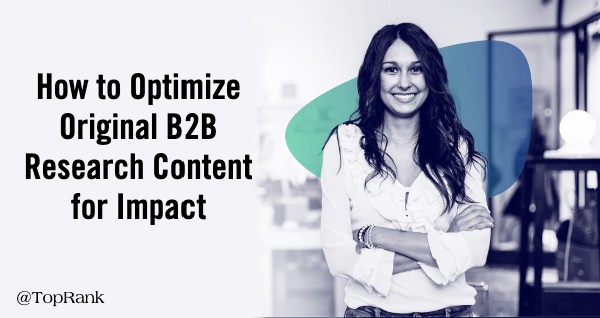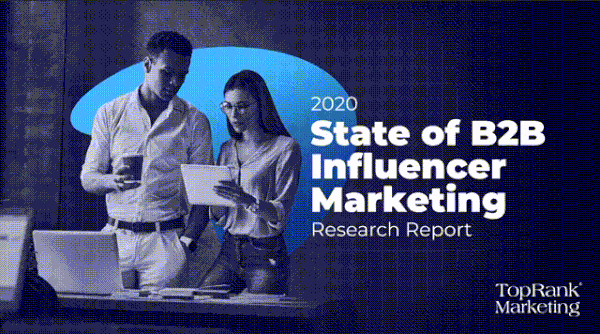How to Optimize Original B2B Research Content For Credibility and Impact

 For many in the B2B marketing world, original research provides an effective way to build thought leadership and drive content for owned and earned media. Unfortunately, many research reports from B2B companies are dry, uninspired and focus solely on pontifications from the brand point of view. Such unremarkable content isn't helping customers, especially if they never see it due to information overload or they don't trust it.
For many in the B2B marketing world, original research provides an effective way to build thought leadership and drive content for owned and earned media. Unfortunately, many research reports from B2B companies are dry, uninspired and focus solely on pontifications from the brand point of view. Such unremarkable content isn't helping customers, especially if they never see it due to information overload or they don't trust it.
Fortunately, there's a better way. More often than not, B2B research reports have marketing objectives focused on building brand thought leadership, attracting new names for nurturing and to serve as a resource for sales. Since most B2B brands don't have the credibility and distribution to reach their marketing goals on their own with such reports, they rely on advertising and PR to attract attention. Ads and PR are fine complements to content. But they're even more effective if that content delivers an experience that is includes built-in credibility and distribution to the the audiences that are probably ignoring most marketing and advertising. How can you optimize research report content to deliver this kind of experience?“With more information, options and people involved in a buying process, buyers are paralyzed when trying to move forward.” Gartner
What does that kind of research report collaboration content process look like? B2B marketers have included quotes from industry experts in their reports for many years - but most do not. However there are many more ways to engage with credible voices that have the trust and attention of the audience you're after. For example, you might partner with a mix of industry experts, influential customers and people who work at brands that represent your ideal clients to add perspective to original research. Adding that expertise isn't enough. The content itself should be packaged as an experience. Whether it's interactive or just well-designed, research content doesn't have to be boring. I think our latest research report on B2B Influencer Marketing is a perfect example of this.Brands that co-create experiential content with relevant experts and influencers can build industry confidence, grow brand trust, create a more effective digital customer experience and drive business growth.
 We partnered with 20+ B2B brand marketing executives and influencers to provide perspective on the key issues surfaced by the research. Instead of the report being authored by me (with some help from my team), there are contributions from influential B2B brands that include:
We partnered with 20+ B2B brand marketing executives and influencers to provide perspective on the key issues surfaced by the research. Instead of the report being authored by me (with some help from my team), there are contributions from influential B2B brands that include:
- Dell
- SAP
- AT&T Business
- Brian Solis
- Ann Handley
- Tamara McCleary
- Mark Schaefer
The post How to Optimize Original B2B Research Content For Credibility and Impact appeared first on Online Marketing Blog - TopRank®.
Share from Online Marketing Blog – TopRank®
How to Optimize Original B2B Research Content For Credibility and Impact
 Reviewed by mimisabreena
on
Monday, August 17, 2020
Rating:
Reviewed by mimisabreena
on
Monday, August 17, 2020
Rating:
 Reviewed by mimisabreena
on
Monday, August 17, 2020
Rating:
Reviewed by mimisabreena
on
Monday, August 17, 2020
Rating:
















No comments:
Post a Comment